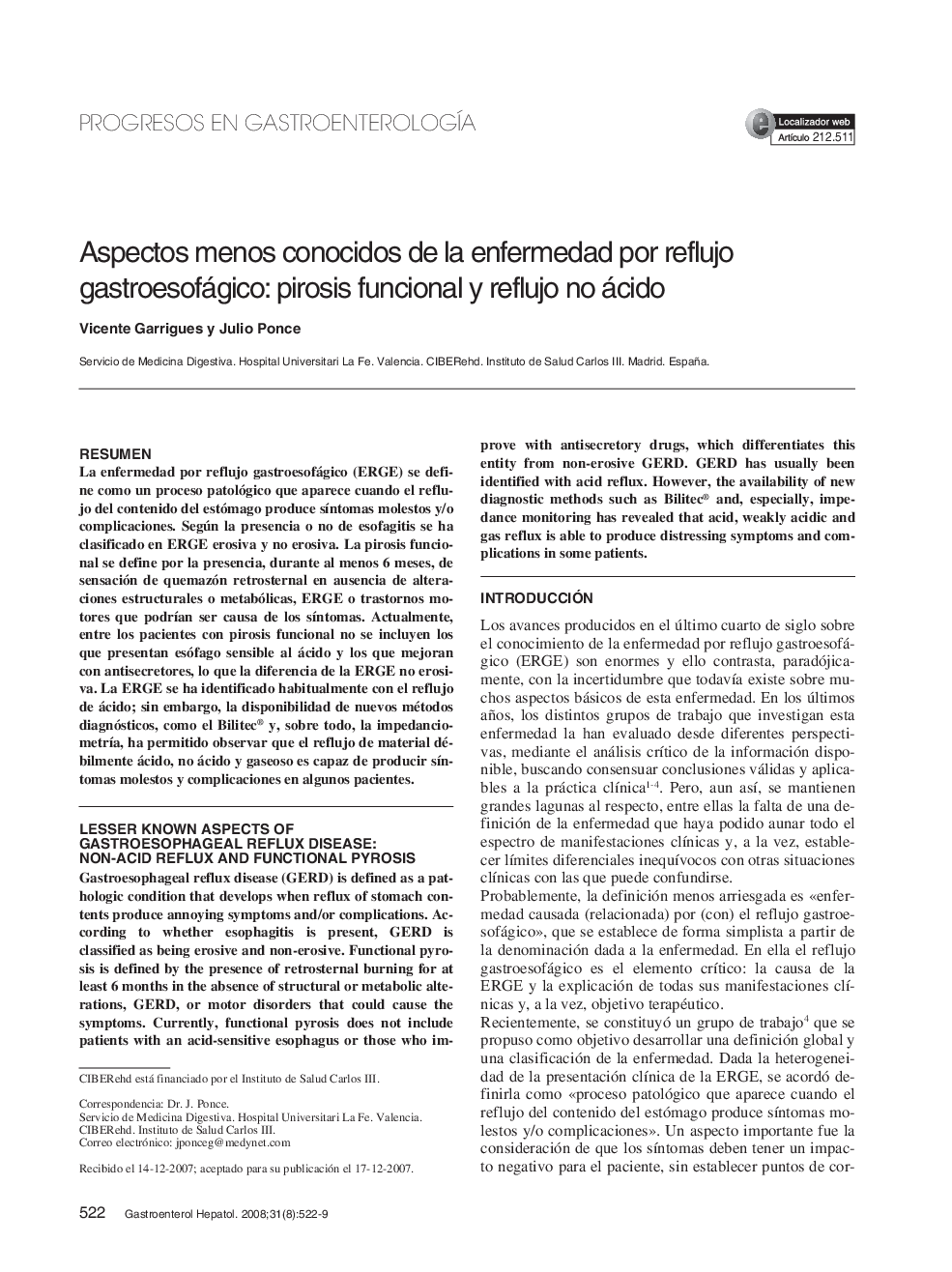| Article ID | Journal | Published Year | Pages | File Type |
|---|---|---|---|---|
| 3288727 | Gastroenterología y Hepatología | 2008 | 8 Pages |
Abstract
Gastroesophageal reflux disease (GERD) is defined as a pathologic condition that develops when reflux of stomach contents produce annoying symptoms and/or complications. According to whether esophagitis is present, GERD is classified as being erosive and non-erosive. Functional pyrosis is defined by the presence of retrosternal burning for at least 6 months in the absence of structural or metabolic alterations, GERD, or motor disorders that could cause the symptoms. Currently, functional pyrosis does not include patients with an acid-sensitive esophagus or those who improve with antisecretory drugs, which differentiates this entity from non-erosive GERD. GERD has usually been identified with acid reflux. However, the availability of new diagnostic methods such as Bilitec® and, especially, impedance monitoring has revealed that acid, weakly acidic and gas reflux is able to produce distressing symptoms and complications in some patients.
Related Topics
Health Sciences
Medicine and Dentistry
Gastroenterology
Authors
Vicente Garrigues, Julio Ponce,
